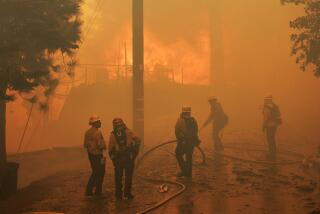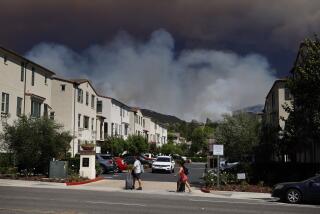Population Growth Prompts a New Look at San Onofre’s Evacuation Plan
The Orange County Sheriff’s Department on Tuesday won approval to create a new evacuation plan for residents living near the San Onofre Nuclear Generating Station.
The Board of Supervisors agreed to spend $100,000 for the updated plan, which officials said is needed because of the growing population throughout southern Orange County.
The current plan places reception and care centers at five locations where the public would go in the event of a malfunction or attack at San Onofre.
Those centers are at UC Irvine, Tustin and Santa Ana high schools, Orange Coast College in Costa Mesa and Edison High School in Huntington Beach.
Officials said they would like to reduce the number of centers, arguing that they can better pool resources and provide more efficient service at from one to three reception areas.
The locations of these centers have not yet been chosen.
“It’s just a better use of resources,” said sheriff’s Capt. Catherine Zurn.
Ray Golden, a spokesman for San Onofre’s owner, Southern California Edison, agreed.
“This will improve the evacuation plan in that it will reduce the number of care centers, but will be much better equipped to handle the increased capacity,” he said.
Safety issues at San Onofre have received much attention after the Sept. 11 terrorist attacks. The federal government has said nuclear power plants are a possible terrorist target.
This year, the state announced it would provide potassium iodide pills to residents living near the power plant--part of a nationwide project launched after Sept. 11. The pills are designed to reduce some health effects of radiation exposure.
The study, to be completed by ABS Consulting, will also look at traffic flow to the evacuation sites, the number of emergency officials needed for the sites and the capacity of each facility.
Currently the San Onofre emergency plan includes a community alert system with a network of 49 pole-mounted sirens in a 10-mile radius of the plant.
If radiation is released, the sirens will warn residents to turn on a TV or radio, where they will get instructions.
The alert will advise residents either to stay in their houses or evacuate to the nearest reception and care center.
“Residents should be appreciative that the emergency plan is not a static document ... and that we are constantly looking at ways of improving it,” Golden said.
More to Read
Sign up for Essential California
The most important California stories and recommendations in your inbox every morning.
You may occasionally receive promotional content from the Los Angeles Times.










